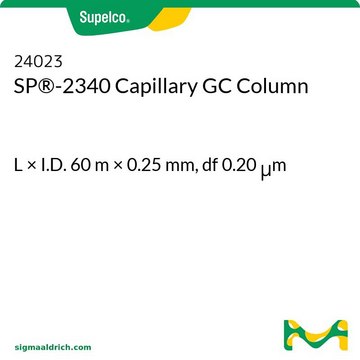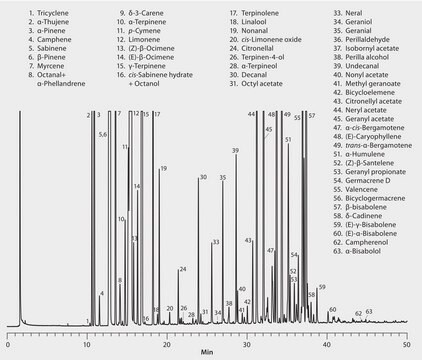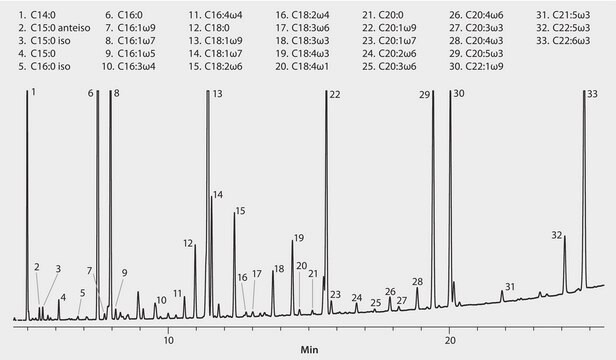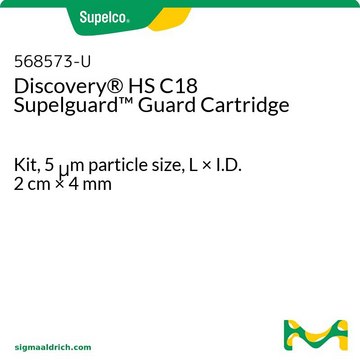24110-U
Columna para GC capilar SP®-2380
L × I.D. 30 m × 0.25 mm, df 0.20 μm
Sinónimos:
GC column, biscyanopropyl siloxane
About This Item
Productos recomendados
Materiales
fused silica
Agency
meets requirements for USP G48
Parámetros
≤25-275 °C temperature (isothermal or programmed)
Valor Beta
313
df
0.20 μm
técnicas
gas chromatography (GC): suitable
L × D.I.
30 m × 0.25 mm
grupo activo de la matriz
Stabilized; poly(90% biscyanopropyl/10% cyanopropylphenyl siloxane) phase
aplicaciones
agriculture
chemicals and industrial polymers
clinical
food and beverages
tipo de columna
capillary highly polar
¿Está buscando productos similares? Visita Guía de comparación de productos
Descripción general
Código USP: Esta columna cumple los requisitos de USP G48.
Fase:
- Estabilizada
- Poli(biscianopropil 90 %/cianopropilfenil siloxano 10 %)
- Subambiente a 275 °C (isotérmica o programada)
Aplicación
- SP®-2380 Capillary Column may be suitable for determination of fatty acid composition in crude oil using capillary gas chromatography, used along with normal and reverse-phase high-performance liquid chromatography (HPLC) in order to study the content and composition of tocopherols, sterols, and phospholipids in soybean oils derived from genetically-modified soybeans.
- It was also found suitable to be used for the identification of fatty acid methyl esters from mammalian samples by fast gas chromatography.
- Furthermore, it is also suitable for determining the hydrogenation level and the level of isomerisation development during the hydrogenation process of edible oils by capillary gas chromatography.
- Above all that it is also suitable to be used in gas chromatography equipped with flame ionization detector (FID) for analysing the cytotoxicity of fatty acids from seed oils containing conjugated linolenic acids (CLN) on mouse tumor and human monocytic leukemia cells.
Otras notas
Información legal
Elija entre una de las versiones más recientes:
¿Ya tiene este producto?
Encuentre la documentación para los productos que ha comprado recientemente en la Biblioteca de documentos.
Los clientes también vieron
Nuestro equipo de científicos tiene experiencia en todas las áreas de investigación: Ciencias de la vida, Ciencia de los materiales, Síntesis química, Cromatografía, Analítica y muchas otras.
Póngase en contacto con el Servicio técnico







